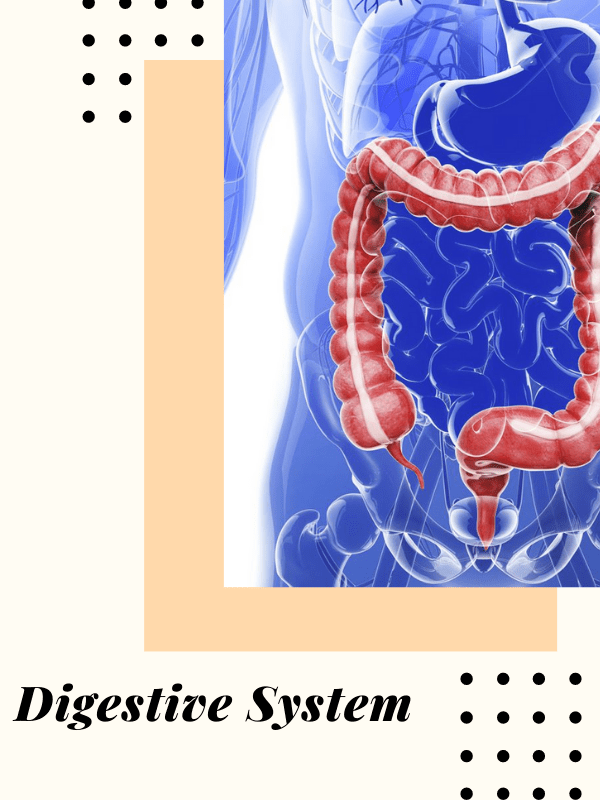Digestive System
Do you know which system of the body converts food into the nutrients? It is the digestive system (1, 2). These nutrients provide the energy we need to survive. It also processes solid waste, or stool, with the help of a bowel movement.
The organs of the digestive system are:
- Mouth,
- Esophagus,
- Stomach,
- Small intestine,
- Large intestine,
- Rectum and anus.
The supporting organs are the pancreas, liver, and gall bladder. Let us see how these organs work together in our digestive system.
Mouth
Are you aware that digestion starts before you even take a bite? In fact, the mouth is the beginning of the digestive tract? The salivary glands get active as we smell and see the food.
Function: Saliva mixes with the food and breaks it down. This helps nutrients to be absorbed. When we swallow, the tongue passes the food into your throat and your esophagus.
Esophagus
The esophagus is Located near the windpipe or trachea. The esophagus receives food from the mouth when we swallow it.
Function- Peristalsis, or series of muscular contractions, delivers food to the stomach. The esophageal sphincter prevents the contents of the stomach from flowing back into the esophagus.
Stomach
The stomach is a hollow organ that holds food while mixed with stomach enzymes. These enzymes help in food breakdown.
Function- The stomach secretes acid and powerful enzymes that are responsible for the breakdown process. The contents are released into the small intestine.
Small intestine
The small intestine has three parts: the duodenum, jejunum, and ileum.
- 1. The duodenum is responsible for the continuous breaking-down process.
- 2. The jejunum and ileum are mainly responsible for the absorption of nutrients into the bloodstream.
Function- The small intestine breaks down food using pancreatic enzymes and bile from the liver. Pancreatic enzymes, water, bile, and mucus contribute to the change in the consistency: semisolid to liquid. The leftover-food residue then moves on to the large intestine, or colon.
Pancreas
The pancreas secretes enzymes into the duodenum. These digestive enzymes break down carbohydrates, fats, and protein. The pancreas also secretes insulin, passing it directly into the bloodstream.
Liver
The liver is the body’s “chemical factory.” It takes the intestine’s raw materials and makes all the various chemicals the body needs to function.
The liver has many functions; it absorbs nutrients from the small intestine. Bile from the liver helps in digesting fat and some vitamins.
The liver helps to detoxify potentially harmful chemicals. The liver breaks down the toxic drugs that can be further excreted.
Gallbladder
The gallbladder stores and concentrates bile from the liver. The bile is then released into the duodenum. The bile helps absorb and digest fats.
Colon or large intestine
The large intestine (colon) is a 6-foot long muscular tube. The colon connects the small intestine to the rectum.
The colon is responsible for processing waste and emptying the bowels. The large intestine is made up of
- the ascending colon,
- the transverse colon,
- the descending colon,
- the cecum,
- the sigmoid colon
The colon empties its contents into the rectum to begin elimination (a bowel movement).
Rectum
The rectum is an 8-inch chamber. It connects the colon to the anus. The sphincters relax and the rectum contracts, disposing of its contents.
Anus
The anus is a 2-inch long canal and the last part of the digestive tract. The anus has the pelvic floor muscles and the two anal sphincters. The external sphincter holds the stool until reaching a toilet, where it then relaxes to release the contents.
Disclaimer and references
- All the images used are under a creative common license.


Pingback: Pharmaceutical Content Writing: How can I learn this skill? - PharmaCampus
Pingback: Aluminium Hydroxide: Pharmacology and brands - PharmaCampus
Pingback: Magnesium Hydroxide- Drug Detail Profile - PharmaCampus
Loving the info on this website , you have done great job on the posts.